EU Green Week Resources
Discussion details
On this page you can find:
1.UNEP Reports
2.Interactive story boards
3.Beat pollution intiatives
4. Videos
5. World Environment Day 5 June - Launch of UN Decade on Ecosystem Restoration - Join #GenerationRestoration
UNEP Reports

The international community has made major progress towards the global target on protected and conserved area coverage, but has fallen far short on its commitments on the quality of these areas, according to a new report from the UN Environment Programme World Conservation Monitoring Centre (UNEP-WCMC) and the International Union for Conservation of Nature (IUCN), produced with support from the National Geographic Society.
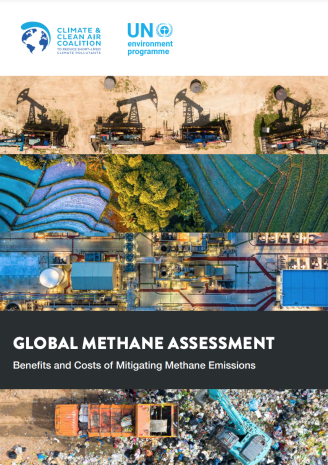
The assessment highlights the critical role that cutting methane emissions, including from the fossil fuel industry, plays in slowing the rate of global warming. Cutting human-caused methane by 45% this decade would keep warming beneath a threshold agreed by world leaders. There are multiple benefits to acting including: the rapid reduction of warming, which can help prevent dangerous climate tipping points; improved air quality that can save hundreds of thousands of lives; improve food security by preventing crop losses; and create jobs through mitigation efforts while increasing productivity through reduced heat stress.
The assessment was launched by Climate & Clean Air Coalition (CCAC) together with the United Nations Environment Programme.

Public understanding of plastic pollution has risen considerably in the last couple of years. Far less understood is the broader context in which this pollution exists, and of the full extent of its impacts. Vulnerable communities around the world deal with the impacts of plastic waste and have historically been unable to inform environmental conversations on the matter.
This report explores the injustices brought on by plastic waste and plastic pollution and examines how vulnerable communities are disproportionately and negatively affected during all stages of the plastic lifecycle. It reviews legal and policy frameworks, exploring historical successes and challenges, and proposes actions for various state and non-state stakeholders.

Synthesis Report, Making Peace with Nature (2021)
The first UNEP synthesis report is titled: “Making Peace With Nature: A scientific blueprint to tackle the climate, biodiversity and pollution emergencies” and is based on evidence from global environmental assessments.The resulting synthesis communicates how climate change, biodiversity loss and pollution can be tackled jointly within the framework of the Sustainable Development Goals. The report serves to translate the current state of scientific knowledge into crisp, clear and digestible facts-based messages that the world can relate to and follow up on. It first provides an Earth diagnosis of current and projected human-induced environmental change, by putting facts and interlinkages in perspective, including by using smart infographics.
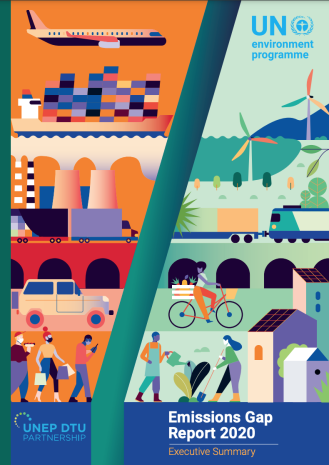
For over a decade, the UNEP Emissions Gap Report has provided a yearly review of the difference between where greenhouse emissions are predicted to be in 2030 and where they should be to avoid the worst impacts of climate change.
The report finds that, despite a brief dip in carbon dioxide emissions caused by the COVID-19 pandemic, the world is still heading for a temperature rise in excess of 3°C this century – far beyond the Paris Agreement goals of limiting global warming to well below 2°C and pursuing 1.5°C.
However, a low-carbon pandemic recovery could cut 25 per cent off the greenhouse emissions expected in 2030, based on policies in place before COVID-19. Such a recovery would far outstrip savings foreseen with the implementation of unconditional Nationally Determined Contributions under the Paris Agreement, and put the world close to the 2°C pathway
Production Gap Report
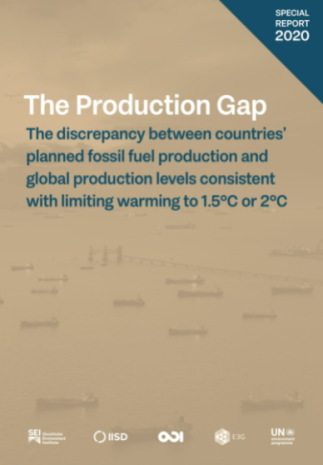
To limit warming to 1.5°C or well below 2°C, as required by the 2015 Paris Agreement, the world needs to wind down fossil fuel production. Instead, governments continue to plan to produce coal, oil, and gas far in excess of the levels consistent with the Paris Agreement temperature limits.
This report highlights the discrepancy between countries’ planned fossil fuel production levels and the global levels necessary to limit warming to 1.5°C or 2°C. This gap is large, with countries aiming to produce 120% more fossil fuels by 2030 than would be consistent with limiting global warming to 1.5°C.
The COVID-19 pandemic and associated response measures have introduced new uncertainties to the production gap. While global fossil fuel production will decline sharply this year, government stimulus and recovery measures will shape our climate future: they could prompt a return to pre-COVID production trajectories that lock in severe climate disruption, or they could set the stage for a managed wind-down of fossil fuels as part of a “build back better” effort.
Greening the Blue Report
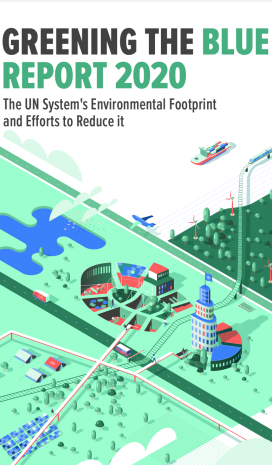
The 2020 Greening the Blue report -released on 10th December 2020 provides a snapshot of the UN System’s environmental impacts throughout 2019 and the activities underway to reduce them. This year’s report includes 2019 data on greenhouse gas emissions, waste, water and environmental management from nearly 60 entities across the UN System, representing approximately 310,000 personnel. It shows that in 2019 the UN System emitted ~2 million tonnes carbon dioxide equivalent (tCO2eq)– or 6.5 tCO2eq per capita. This is a further decrease since 2010 when the per capita emissions per UN personnel were 8.3 tCO2eq. According to Greening the Blue, in 2019, 43% of the UN’s greenhouse gas impact was from its facilities (headquarter offices, field offices, warehouses etc.), 45% from air travel, and 12% from other modes of travel.
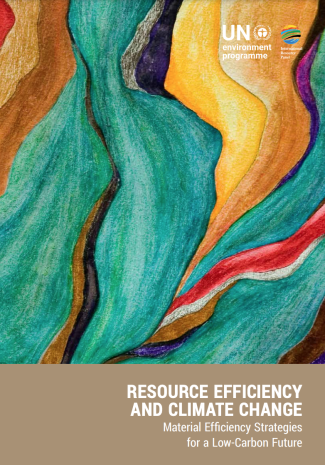
Report on Resource Efficiency and Climate Change: Material Efficiency Strategies for a Low-Carbon Future (2020)
This report conducts a rigorous assessment of the contribution of material efficiency to GHG abatement strategies. More concretely, it assesses the reduction potential of GHG emissions from material efficiency strategies applied in residential buildings and light duty vehicles, and reviews policies that address these strategies. It shows that increasing material efficiency is a key opportunity to achieve the aspirations of the Paris Agreement.
Towards A Pollution-free planet
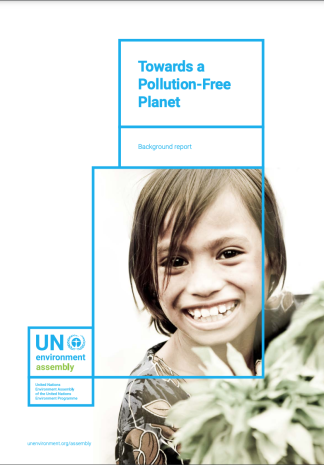
Pollution today is pervasive and persistent. While the world has achieved significant economic growth over the past few decades, it has been accompanied by large amounts of pollution, with significant impacts on human health and ecosystems and the ways in which some of the major Earth systems processes, such as the climate, are functioning. This report describes the pollution challenge, explores what is already being done to address pollution, and proposes 50 focused and actionable interventions to address pollution in all its forms. The report is a call to act towards a pollution-free planet.
GEO6forYouth
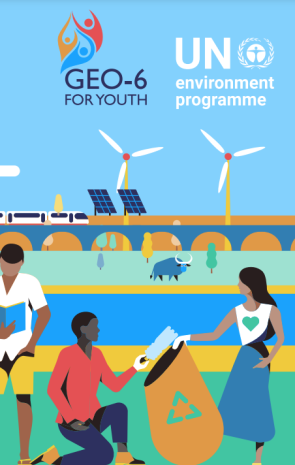
GEO-6 for Youth is a one-stop-shop for a young person to understand the state of the environment, what they can do every day to drive markets to adopt environmentally sustainable products and services and how to develop their skills and choose environmentally sustainable careers. The report provides background to help understand the issues, but most importantly shows how youth have the power to bring about transformative change for the environment. GEO-6 for Youth is UNEP’s first fully interactive e-publication and provides engaging multimedia content and interactive features to inform, engage, educate, and lead to youth action. Several case studies and interviews appear in the report, including small-scale, community-led projects and individual guides to developing the appropriate skills for green jobs and daily sustainable actions. A gender and geographically balanced team of 28 young authors from across the world worked on the report using the GEO’s co-creation model.
Global Trade in Used Vehicles Report

Millions of used cars, vans and minibuses exported from Europe, the USA and Japan to low- and middle-income countries are hindering efforts to combat climate change. They are contributing to air pollution and are often involved in road accidents. Many of them are of poor quality and would fail road-worthiness tests in the exporting countries.
A landmark, first-of-its-kind United Nations Environment Programme (UNEP) report, released today, looks at 146 countries that import used vehicles, and calls for action to regulate the trade through the adoption of a set of harmonized minimum quality standards. These would ensure used vehicles contribute to cleaner and safer fleets in recipient countries. UNEP and partners will address these issues, initially with a project focused on Africa.
Cooling Emissions and Policy Synthesis Report
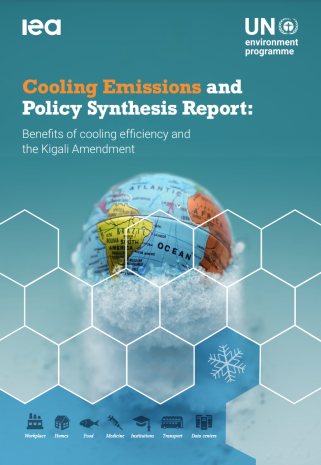
Action under the Kigali Amendment to the Montreal Protocol on Substances that Destroy the Ozone Layer (Montreal Protocol) will phase-down the production and use of hydrofluorocarbons (HFCs) and could avoid up to 0.4°C of global warming by 2100.
In a warming world, prosperity and civilization depend more on access to cooling.i The growing demand for cooling will contribute significantly to climate change. This is from both the emissions of HFCs and other refrigerants and CO2 and black carbon emissions from the mostly fossil fuel-based energy powering air conditioners and other cooling equipment. These emissions are particularly dominant during periods of peak power demand, which are increasingly determined by demand for air conditioning. As the climate warms, the growing demand for cooling is creating more warming in a destructive feedback loop.
Urban Air Action Platform

The Urban Air Action Platform aims to sustain and grow the world’s foremost air quality databank. The data, shared on a single, UN-coordinated platform empowers governments to improve policy, allows citizens to make more informed health choices and demand action from their governments, while giving businesses the ability to make investment decisions that promote a cleaner, greener environment.
Air Quality Management in the Western Balkans

People living in Bosnia and Herzegovina, Kosovo and North Macedonia are breathing more toxic air than their neighbors in Western Europe, especially in urban areas and during the winter months when heating – especially residential heating – emerges as the most important source of air pollution.
With the current policy framework, air pollution is not expected to decline markedly as the burning of dirty fuels for heating and cooking will continue at high levels. Investments in more efficient heating systems and improving insulation of houses and apartments is also not expected to improve markedly.
This report responds to Resolution 4/8 by the United Nations Environment Assembly (UNEA) and aims to inform the international community about the current situation of specific issues of concern, based on a review of evidence published within the past decade. It is meant to inform and support decision making at UNEA and other international forums working towards sound chemicals and waste management. After introduction and methods chapters, Chapter 3 assesses the eight emerging policy issues and issues of concern (for simplicity, hereafter both are referred to as “issues of concern”) identified by the International Conference on Chemicals Management (ICCM) under the Strategic Approach to International Chemicals Management (SAICM). It reviews how current regulatory and policy frameworks address them by specific instruments and actions, building on GCO-II findings and highlighting challenges and opportunities. Chapter 4 addresses the 11 issues with emerging evidence of risks identified by GCO-II.
Unlike most industrial chemicals, pesticides and fertilizers (both inorganic and organic) are deliberately released to the environment to provide specific functions. These releases create potential risks to the environment and health. Yet despite many published scientific studies, data gaps exist and consolidated knowledge about the adverse impacts of pesticides and fertilizers at the global level is lacking. To help address that gap, UNEA Resolution 3/4 requested “the Executive Director to present a report on the environmental and health impacts of pesticides and fertilizers and ways of minimizing them, given the lack of data in that regard, in collaboration with the World Health Organization, the Food and Agriculture Organization of the United Nations and other relevant organizations by the fifth session of the United Nations Environment Assembly”. This report was developed by UNEP in close consultation with FAO, WHO and a wide range of experts and stakeholders.
The New Plastics Economy Global Commitment 2020 Progress Report
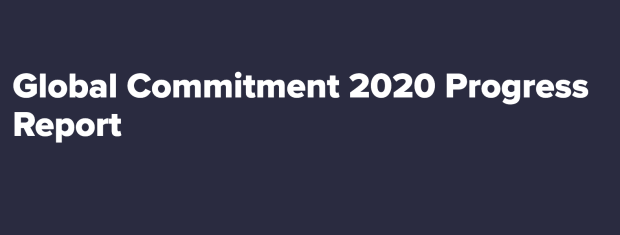
The Ellen MacArthur Foundation and UN Environment Programme (UNEP) have released the New Plastics Economy Global Commitment Progress report for 2020.
The 2020 Progress Report identifies efforts made so far in the incorporation of recycled content in plastic packaging, and the phasing out of undesirable items such as undetectable carbon black pigments and single-use plastic bags and straws.
First released in 2019, the new report provides updates from signatories to the Commitment towards their 2025 targets towards creating a circular economy for plastics.
National Guidance for Plastic Pollution Hotspotting and Shaping Action

The attention on plastic pollution has intensified in recent years among national governments and the global community. The ‘National Guidance for Plastic Pollution Hotspotting and Shaping Action’ (hereinafter referred to as ‘the Guidance’) aims to provide a structure for the methods of identifying plastic leakage ‘hotspots’, finding their impacts along the entire plastic value chain, and then prioritising actions once these hotspots are identified. Co-developed by UNEP, IUCN and the Life Cycle Initiative, the Guidance sprung from our desire to address the challenge to define an effective strategy to address plastic pollution, in a systemic way. It is aimed at enabling countries, regions, or cities to take and use this structure, or framework, in their own environments.
Water pollution by plastics and microplastics: A review of technical solutions from source to sea
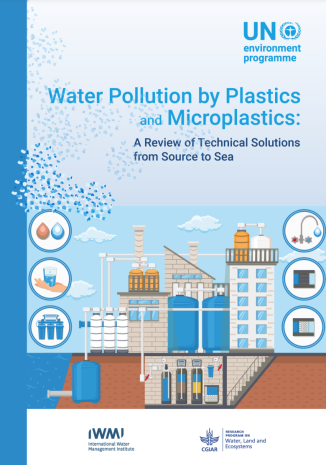
“Water pollution by plastics and microplastics: A review of technical solutions from source to sea,” composed of a toolkit and catalogue, has been jointly developed by the United Nations Environment Programme (UNEP) and the International Water Management Institute (IWMI). With a focus on wastewater, the publication presents a range of solutions to reduce plastic and microplastic pollution from the source to the sea. It also encourages policymakers and practitioners to set priorities and select those that are more cost-effective and suitable for their local context. Finally, it stresses the importance of having technical solutions in addition to appropriate legislation, economic instruments, education, and awareness that force real change on the ground.
Addressing Marine Plastics: A Systemic Approach – Recommendations for Actions
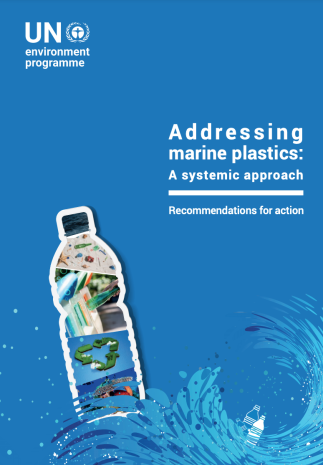
Building on two previous reports developed under this project on stocktaking of the global plastic value chain, this report identifies gaps to address marine plastics at each value chain stage, and recommends actions to be taken by different stakeholders to achieve a circular economy for plastics at the global level. The report also recommends actions in priority sectors where plastic waste is substantial and impacts on the environment are high.
Sanitation and Wastewater Atlas of Africa

The Sanitation and Wastewater Atlas of Africa is the flagship product of a four-year project implemented jointly by the United Nations Environment Programme, GRID-Arendal, and the African Development Bank to describe the current situation of wastewater management and sanitation across the African continent. The Atlas consists of different chapters focusing on various aspects of wastewater management, including for example ecosystems, human health, policies and circular economy, and has a section with detailed country profiles. This publication is a tool that will help policymakers and the wide public across Africa and beyond to better understand and address the current gaps, and opportunities in this sector.
Faecal Sludge Management in Africa
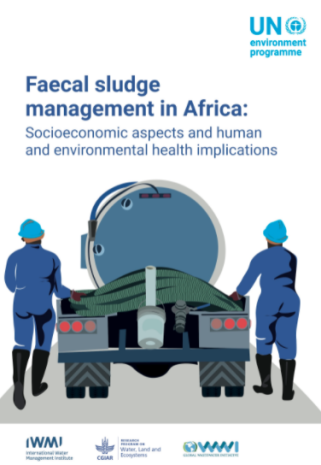
Jointly developed by the United Nations Environment Programme (UNEP) and the International Water Management Institute (IWMI), the research paper Faecal sludge management in Africa: Socio-economic aspects, human and environmental health implications explores current trends of faecal sludge management and how poor management practices worsen human and environmental health across Africa.
Enhance wastewater management and sanitation services delivery, boost investments, and build upon best practices from the continent: the paper highlights some solutions and how improving faecal sludge management is fundamental to tackle the global sanitation crisis and achieve Sustainable Development Goal (SDG) 6: water and sanitation for all by 2030.
Waste Management during the COVID-19 Pandemic: from response to recovery

The impact of COVID-19 is transforming the way we live, from one day to the next. While national and local interventions are largely focused on protecting lives and economies, management of hazardous waste is also essential to minimize long-term risks to human and environmental health.
A new publication - Waste Management during the COVID-19 Pandemic: from response to recovery - reviews current practices for managing waste from healthcare facilities, households and quarantine locations accommodating people with confirmed or suspected cases of COVID-19. Jointly produced by UNEP International Environmental Technology Centre (IETC) and the Institute for Global Environmental Strategies, the report considers various approaches, identifies best practices and technologies, and provides recommendations for policy-makers and practitioners to improve waste management, over the long term.
The New Plastics Economy Global Commitment 2019 Progress Report
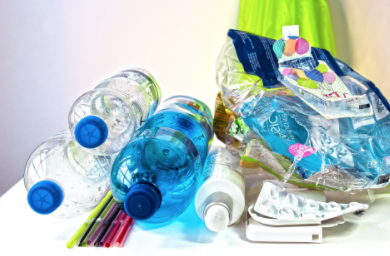
People around the world are coming together to demand change in the way we make and use plastics. Millions of dollars are being invested in cleaning up our oceans, rivers and beaches in an effort to turn the tide on plastic pollution. These efforts are vital, but will be for nothing if ever more plastic continues to be allowed to escape into our environment — or indeed be landfilled or burned. We need to tackle the issue at source, and this is what the Global Commitment aims to do
Wastewater Pollution on Coral Reefs: Supporting Science Synthesis

This report provides the supporting science for the UNEP Science-to-Policy brief (2017). It synthesizes the current science on wastewater pollution and coral reefs to inform decision-making and policy globally. This synthesis will support decision-making and capacity building efforts at a regional level under the Global Wastewater Initiative, initially in the Caribbean and Red Sea region, and later in the Pacific region; to strengthen monitoring of wastewater loading and impacts among key stakeholder groups; and to raise awareness through Regional Seas and other relevant mechanisms. The report also provides the foundation and key recommendations for linking wastewater monitoring explicitly to coral reef status and resilience assessments.

The overall purpose of this brief is to provide policy and management recommendations for addressing and reducing the impacts of plastics on shallow water coral reefs, based on current scientific knowledge. In doing so, the brief will contribute to achieving the related global, national and regional goals and targets, including the Sustainable Development Goals (SDGs). The brief promotes integrated planning and management, awareness-raising, and other efforts to improve and standardise the monitoring of plastics on reefs.
It is primarily aimed at national and state policy-makers. The supporting scientific evidence provides rationale for recommendations and more detailed information for government officials with technical roles, as well as regional environmental organisations and conservation organizations.

The Global Chemicals Outlook II – From Legacies to Innovative Solutions: Implementing the 2030 Agenda for Sustainable Development, mandated by the UN Environment Assembly in 2016, seeks to alert policymakers and other stakeholders to the critical role of the sound management of chemicals and waste in sustainable development. It takes stock of global trends as well as progress made and gaps in achieving the global goal to minimize the adverse impacts from chemicals and waste by 2020.
The full Global Chemicals Outlook II is launched electronically on 29 April 2019 in Geneva, Switzerland, at a side event at the meetings of the conferences of the Parties to the Basel, Rotterdam and Stockholm conventions. It features the following Parts:
- Introduction and key messages for policymakers
- Part I: The evolving chemicals economy: status and trends relevant for sustainability
- Part II: Where do we stand in achieving the 2020 goal – assessing overall progress and gaps
- Part III. Advancing and Sharing Chemicals Management Tools and Approaches: Taking Stock, Looking into the Future
- Part IV: Enabling policies and action to support innovative solutions
- Part V: Scaling up collaborative action under the 2030 Agenda for Sustainable Development
The New Plastics Economy Global Commitment 2019 Progress Report
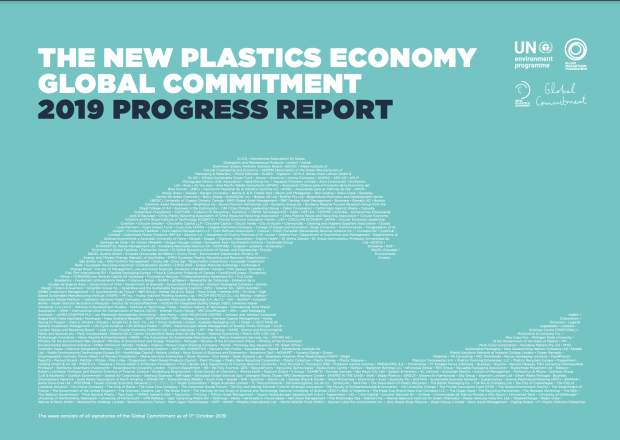
People around the world are coming together to demand change in the way we make and use plastics. Millions of dollars are being invested in cleaning up our oceans, rivers and beaches in an effort to turn the tide on plastic pollution. These efforts are vital, but will be for nothing if ever more plastic continues to be allowed to escape into our environment — or indeed be landfilled or burned. We need to tackle the issue at source, and this is what the Global Commitment aims to do
The benefits of plastic are undeniable. The material is cheap, lightweight and easy to make. These qualities have led to a boom in the production of plastic over the past century. This trend will continue as global plastic production skyrockets over the next 10 to 15 years. We are already unable to cope with the amount of plastic waste we generate. Only a tiny fraction is recycled. About 13 million tonnes of plastic leak into our oceans every year, harming biodiversity, economies and, potentially, our own health. The world urgently needs to rethink the way we manufacture, use and manage plastic. This paper sets out the latest thinking on how we can achieve this. It looks at what governments, businesses and individuals can do to check the runaway production and consumption of plastic.
Plastics and shallow water coral reefs: Synthesis of the science for policy-makers
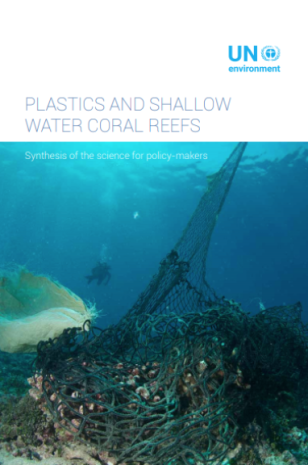
The overall purpose of this brief is to provide policy and management recommendations for addressing and reducing the impacts of plastics on shallow water coral reefs, based on current scientific knowledge. In doing so, the brief will contribute to achieving the related global, national and regional goals and targets, including the Sustainable Development Goals (SDGs). The brief promotes integrated planning and management, awareness-raising, and other efforts to improve and standardise the monitoring of plastics on reefs.
It is primarily aimed at national and state policy-makers. The supporting scientific evidence provides rationale for recommendations and more detailed information for government officials with technical roles, as well as regional environmental organisations and conservation organizations.
Legal limits on single-use plastics and microplastics

This report provides a global overview on the progress of countries in passing laws and regulations that limit the manufacture, import, sale, use and disposal of selected single-use plastics and microplastics which have a great impact in the production of marine litter. It is based on a review of national legally-binding instruments that include bans and restrictions, taxes and levies, and waste management measures to enhance disposal, encourage reuse and recycling, and promote alternatives to plastic products. The report includes three sections: 1) plastic bags, 2) other single-use plastics, and 3) microbeads. It seeks to provide a more thorough understanding of the scope and types of regulatory approaches policymakers are employing to address plastic pollution. The report should enable future research by enhancing the understanding of existing legal requirements to prevent plastic pollution at the country level.
Single-use plastics: A roadmap for sustainability
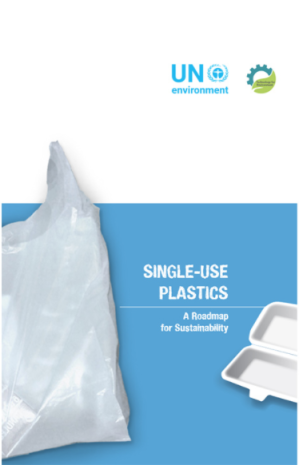
The benefits of plastic are undeniable. The material is cheap, lightweight and easy to make. These qualities have led to a boom in the production of plastic over the past century. This trend will continue as global plastic production skyrockets over the next 10 to 15 years. We are already unable to cope with the amount of plastic waste we generate, unless we rethink the way we manufacture, use and manage plastics. Ultimately, tackling one of the biggest environmental scourges of our time will require governments to regulate, businesses to innovate and individuals to act. This paper sets out the latest thinking on how we can achieve this. It looks at what governments, businesses and individuals have achieved at national and sub-national levels to curb the consumption of single-use plastics. It offers lessons that may be useful for policymakers who are considering regulating the production and use of single-use plastics.
Exploring the potential for adopting alternative materials to reduce marine plastic litter
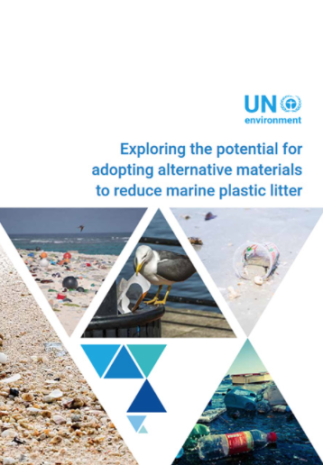
This report aims to provide representative examples of some of the many alternative materials that are either available commercially, or are in development. It is intended to encourage entrepreneurs, ‘startups’ and established businesses - as well as researchers in the fields of materials science, engineering, agronomy and related fields – to explore more effective and sustainable products and practices. The overall aim should be to reduce society’s dependence on the unnecessary use of plastics, especially from fossil-fuel sources.
Addressing Marine Plastics: A Systemic Approach – Stocktaking Report
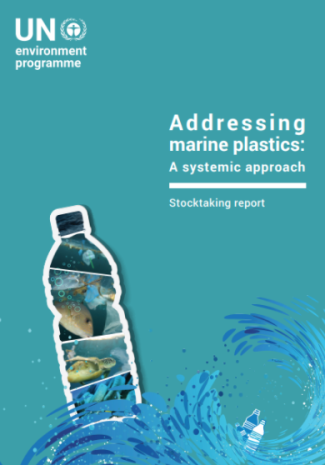
This report takes stock of the extent of knowledge on plastics in the marine environment. It provides a high-level summary of the available literature on the key sources and locations of these plastics, along with an analysis of the problematic products and polymers making up marine plastics and micro-plastics. It also looks at what is currently being done to address marine plastics and summarises existing policy responses in order to lay the groundwork for future action.

This report provides a comprehensive global mapping of plastic losses to the environment throughout the plastic value chain using 2015 as the reference year. This mapping covers plastic production and processing, use of plastics or plastic containing products, and disposal of the products. It differentiates 23 types of plastics and 13 plastic applications, including division between macro- and micro-plastics (including microbeads and microfibers).

Technical information on mercury monitoring in biota (2018)
Biota are important bioindicators because they reflect the potential harm of emissions and releases of mercury to air, water and land. Because there are not suitable models to predict the methylation process and the entry of methylmercury into the food web, high trophic level biota is recommended (i.e., trophic level 4 or higher). High trophic level biota can therefore be used to identify spatial gradients, including ecosystem sensitivity spots, and to track changes over time.
The technical report compiled and synthesized information available through the “Global Biotic Mercury Synthesis” or GBMS, this database on mercury in biota and identified information and data gaps, comparability, options for filling gaps, available modelling capabilities to assess changes, baselines, and proposed monitoring approaches with an estimated budget.
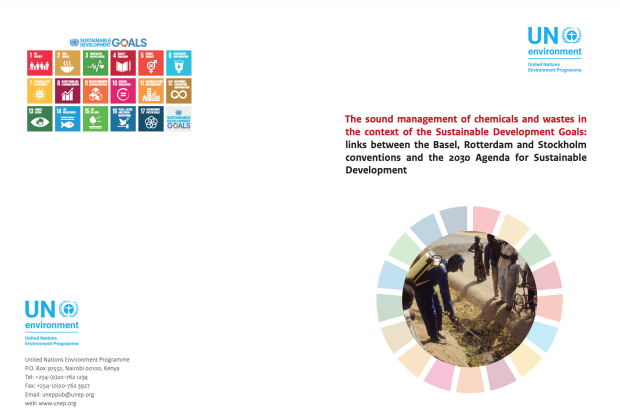
The sound management of chemicals and wastes in the context of the Sustainable Development Goals (2018)
The focus of discussions on the Sustainable Development Goals has shifted to the development of appropriate indicators for measuring progress in the implementation of the Goals at the global, regional and national levels. While the role and relevance of multilateral environmental agreements in that regard have long been recognized, current efforts to develop the Sustainable Development Goal indicators seem to have been hindered by the appropriateness of the data and information emanating from the implementation of those agreements.
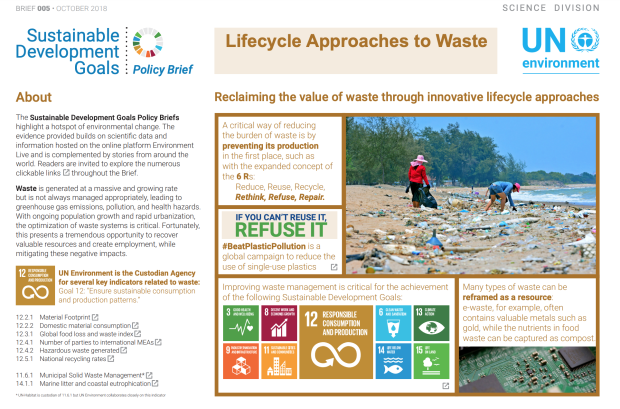
Lifecycle Approaches to Waste (2018)
The focus of discussions on the Sustainable Development Goals has shifted to the development of appropriate indicators for measuring progress in the implementation of the Goals at the global, regional and national levels. While the role and relevance of multilateral environmental agreements in that regard have long been recognized, current efforts to develop the Sustainable Development Goal indicators seem to have been hindered by the appropriateness of the data and information emanating from the implementation of those agreements.
Other reports on:
- the use of chemicals in food products:
- A report on the environmental and health impacts of pesticides and fertilizers and ways of minimizing them (Advanced Draft)
- Green and Sustainable Chemistry: Framework Manual - Revised Draft
- An Assessment Report on Issues of Concern: Chemicals and Waste Issues Posing Risks to Human Health and the Environment
- An assessment of options for strengthening the science-policy interface at the international level for the sound management of chemicals and waste.
Other interactive resources:

Problems and Solutions
https://www.unep.org/interactive/emissions-gap-report/2020/
https://www.unep.org/interactive/global-environment-outlook/
https://www.unep.org/interactive/beat-plastic-pollution/
https://www.unep.org/interactive/actions-to-clear-air/
https://www.unep.org/interactive/all-you-need-to-know-air-pollution/
Find more storyboards at: https://www.unep.org/news-and-stories/interactives
Beat Pollution Initiatives
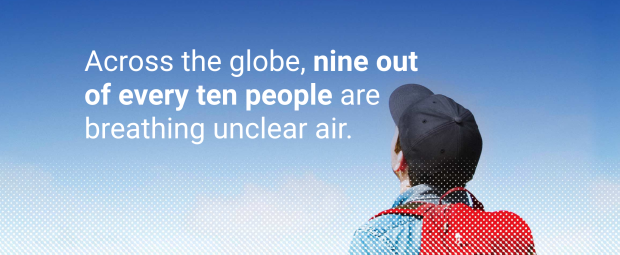
Air Pollution
Causes https://www.cleanairblueskies.org/did-you-know/causes-air-pollution
Key Facts about air pollution https://www.who.int/news-room/fact-sheets/detail/ambient-(outdoor)-air-quality-and-health
- Clean Air and SDGs https://www.cleanairblueskies.org/did-you-know/clean-air-sdgs
- The State of Global air Quality https://www.cleanairfund.org/publication/state-of-global-air-quality-funding-2020/
- How can YOU get involved – Business https://www.cleanairblueskies.org/stakeholder-action/businesses
- Cities https://www.cleanairblueskies.org/cities
- Governments https://www.cleanairblueskies.org/stakeholder-action/governments
- Solutions https://breathelife2030.org/

Clean Seas
Facts and Figures https://www.cleanseas.org/did-you-know
https://www.cleanseas.org/alternative-ways-beatplasticpollution
Causes https://www.cleanseas.org/what-marine-litter
How to get involved https://www.cleanseas.org/if-you-cant-reuse-it-refuse-it
Join the pledge to support ocean protection https://www.glowing.org/
Video Material
Green Entrepeneur videos:
PROARTSO, Recycling Initiative
https://www.youtube.com/watch?v=EDR4wntiNCo
Pocholo Espina: SIP Innovations
https://www.youtube.com/watch?v=ovZSBG9EXD4
Aziza and Bader: Mangroves
https://www.youtube.com/watch?v=Ln_40TkYWsk&
Lucia Musau, Sustainable Fashion
https://www.youtube.com/watch?v=Jhcmq-KiYrE
Keiko Takashi, Environmental Education
https://www.youtube.com/watch?v=0Dw-KMosacg
GEO-6 for Youth Authors:
Priti Patel, Public Health Sector
https://www.youtube.com/watch?v=tEy1KvGkV6I
Rohan Bhargava,
https://www.youtube.com/watch?v=YO3iXAF8BVE
Jacopo Napolitano, Water Resource Management
https://www.youtube.com/watch?v=WEBDJsucPvQ
Samanta Villegas, Private Sector
https://www.youtube.com/watch?v=HbXdbNd5urw
Hyeonju Ryu, Data Analysis
https://www.youtube.com/watch?v=yDRX2iJNBwA
Sarah Nyawira, Blue Economy Sector
https://www.youtube.com/watch?v=hNl3BKCSlpo
Ali's Story on his Recycling Initiative
https://www.youtube.com/watch?v=4YZH-18-UJ0&t=1s
5. What you can do for World Environment Day?
What can you do? Recreate and Restore Nature and join #GenerationRestoration! Some suggestions:
- Watch and share this stimulating poem on youtube by 19- year old word artist and climate activist Jordan Sanchez for World Environment Day.
- Join the Snap Challenge!
It would be amazing if you could participate and encourage others to join #generationrestoration for World Environment Day, by sharing a snap video of your own! Please find an explainer video here and a first official Snap by Young Champion of the Earth Nzambi Matee - For all social media assets, branding and messaging, you may also like to visit the World Environment Day 2021 Trello Board
- Hold a clean up, green up your offices, encourage pro-environmental behaviour through an activity…. Whatever you do to mark World Environment Day, register your events here, and it will be promoted on our website.
- Share your blog updates here to be featured, and find events you can join there as well. You may for instance wish to register to our upcoming film screening events on 8 June and 15 June, and visit Brussels Grand Place on 5 June in the evening as it will be illuminated in green for the occasion,
Resources:
- World Environment Day 2021 Marketing Brief is a two-page document which succinctly provides the context for this year's World Environment Day celebrations, explains the theme and key messages, and introduces the global campaign.
- World Environment Day 2021 Brand Guide provides information on the use of logo and branding, as well as visual identity including instructions on the use of colour, social media cards and look and feel of design assets for this year's campaign and theme:
- Ecosystem Restoration Playbook, already available on the website, is a guidebook on how individuals, groups and organisation can join the #GenerationRestoration movement. It identifies opportunities for accessible and on-the-ground restoration actions in local ecosystems and information on finding partners and support.
- World Environment Day Website is regularly updated and will continue featuring additional assets, it provides more detailed information, restoration stories, news and press releases, assets, and information on events being planned by UNEP, Host Country, and Partners.
Thanks so much! and we look forward to growing #GenerationRestoration together!
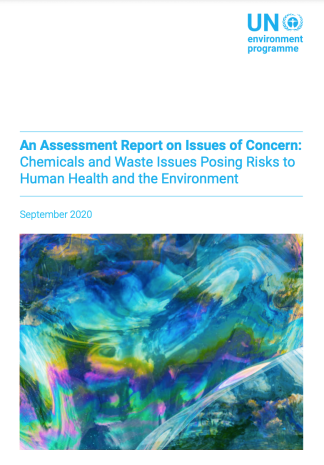
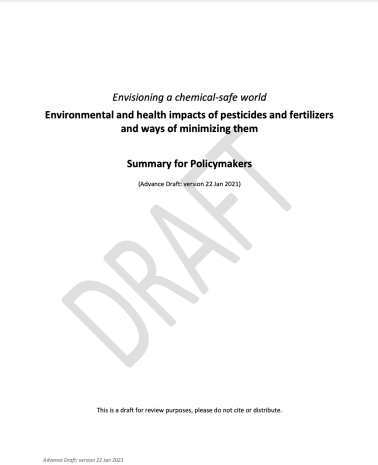

Log in with your EU Login account to post or comment on the platform.